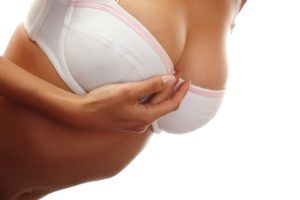 After pregnancy, many women experience changes in their bodies that can be difficult to accept. One common issue that postpartum moms face is a loss of abdominal tone, which can be frustrating and challenging to address through diet and exercise alone. However, tummy tucks offer a solution to help restore abdominal tone and reclaim your body after pregnancy. In this blog post, we will explore the basics of tummy tucks for postpartum moms, including when the right time is for the procedure, how to prepare, what to expect during the procedure, tips for recovery and healing, and realistic expectations for tummy tuck results. Board-certified plastic surgeon Dr. Gary Motykie performs tummy tuck surgery for patients in Beverly Hills, West Hollywood, Los Angeles, and surrounding locations.
After pregnancy, many women experience changes in their bodies that can be difficult to accept. One common issue that postpartum moms face is a loss of abdominal tone, which can be frustrating and challenging to address through diet and exercise alone. However, tummy tucks offer a solution to help restore abdominal tone and reclaim your body after pregnancy. In this blog post, we will explore the basics of tummy tucks for postpartum moms, including when the right time is for the procedure, how to prepare, what to expect during the procedure, tips for recovery and healing, and realistic expectations for tummy tuck results. Board-certified plastic surgeon Dr. Gary Motykie performs tummy tuck surgery for patients in Beverly Hills, West Hollywood, Los Angeles, and surrounding locations.
Understanding the Basics of a Tummy Tuck
A tummy tuck, technically known as abdominoplasty, is a surgical intervention aimed at enhancing the appearance of the abdomen. During this procedure, a surgeon meticulously removes surplus skin and fat that may persist after pregnancy, weight loss, or due to aging, and tightens the underlying abdominal muscles for a firmer, more contoured midsection. The complexity and duration of a tummy tuck can vary, largely dependent on the individual’s specific condition and the desired outcome, with most surgeries requiring general anesthesia.
This operation is not a one-size-fits-all solution; it is tailored to address the unique needs of each patient. The process typically begins with a horizontal incision made just above the pubic hairline, through which the surgeon can access and repair weakened abdominal muscles and remove excess tissue. For individuals with a significant amount of excess skin, an additional incision around the navel may be necessary to achieve an optimal result.
Careful consideration and planning with a board-certified plastic surgeon are crucial to ensure the safety and efficacy of the procedure. A comprehensive preoperative evaluation helps to outline the approach that will best meet the patient’s aesthetic goals while taking into account their overall health and any potential risks. Patients should have a clear understanding of the surgical plan, including the extent of the procedure and what to expect during the recovery period, to ensure they are fully prepared for the journey toward reclaiming their body.
When Is the Right Time for a Postpartum Tummy Tuck?
Deciding on the ideal timing for a tummy tuck after childbirth is crucial for both the effectiveness of the procedure and the safety of the mother. Generally, a waiting period of at least six months post-delivery is advisable. This interval allows the body ample time to recover from the stresses of pregnancy and childbirth. Additionally, it provides mothers with the opportunity to shed any pregnancy-related weight gain naturally, through diet and exercise, which can enhance the results of the tummy tuck.
Another significant consideration is the mother’s family planning future. Opting for a tummy tuck should be a decision made when one is confident that they are not planning any more pregnancies. Pregnancy after a tummy tuck can potentially alter the surgical results, leading to a need for revision surgery.
Furthermore, if a mother is breastfeeding, it’s important to allow time after weaning before scheduling the surgery. This ensures that the body has returned to its pre-pregnancy hormonal baseline, which can affect the skin and tissues’ elasticity and healing capabilities.
In preparation for the tummy tuck, achieving a stable weight close to one’s ideal weight is beneficial. Fluctuations in weight post-surgery can impact the longevity and aesthetics of the tummy tuck results. Engaging in a consultation with a board-certified plastic surgeon who can provide personalized advice based on your body’s recovery post-pregnancy and your overall health is a critical step in the process. This personalized approach ensures that the timing of the surgery aligns with your unique circumstances, ensuring the best possible outcome.
Preparing for Your Tummy Tuck: Steps to Take
Embarking on the journey toward a tummy tuck begins with thorough preparation, essential for ensuring the best possible outcome. A crucial initial step involves selecting a board-certified plastic surgeon with a strong track record in performing abdominoplasty. This selection process should include reviewing before-and-after photos of their previous work, reading patient testimonials, and verifying their surgical certification and experience.
Once you have chosen your surgeon, a comprehensive consultation is the next critical step. This meeting is an opportunity to discuss your aesthetic objectives, assess your abdominal area, and understand the tailored approach the surgeon will take to meet your needs. It’s also a time to address any concerns or questions you may have about the procedure, recovery, and expected outcomes.
Your surgeon will provide a list of pre-operative instructions to prepare your body for surgery and facilitate a smoother recovery. These guidelines often cover lifestyle adjustments such as adhering to a balanced diet, engaging in regular physical activity, and ensuring adequate hydration. Additionally, you may be advised to cease smoking and avoid certain medications and supplements that can increase bleeding risk.
Preparing your home for the post-surgery recovery period is also essential. This preparation might include arranging for help with daily activities, setting up a comfortable recovery area, and stocking up on easy-to-prepare meals and necessary supplies.
By meticulously following these steps, you lay a strong foundation for a successful tummy tuck, paving the way towards reclaiming your body with confidence.
The Tummy Tuck Procedure: What to Expect
The journey of a tummy tuck begins with the strategic placement of an incision by your surgeon, typically situated along the lower abdomen just above the pubic hairline. This initial cut serves as a gateway for the surgeon to meticulously remove unwanted excess skin and fat, sculpting the abdominal area into a more aesthetically pleasing shape. As part of this intricate process, weakened or separated abdominal muscles are carefully tightened and secured, restoring the abdominal wall’s integrity and function.
The procedure’s technical aspects are highly personalized, with the approach tailored to address the unique contours and conditions of each patient’s body. In instances where significant amounts of excess skin are present, additional incisions around the navel might be necessary to ensure a natural, harmonious appearance post-recovery.
Upon completion of the sculpting and tightening work, the initial incision is closed with sutures, skillfully placed to minimize visible scarring. A temporary drainage tube may be inserted to prevent fluid build-up and aid in the healing process. To support the newly contoured abdomen and mitigate swelling, a specially designed compression garment is typically applied, marking the commencement of the recovery phase.
This meticulous approach to abdominoplasty seeks not only to enhance the physical appearance but to bolster the patient’s comfort and confidence during the healing journey. With each procedural detail carefully executed, the foundation for a successful transformation is laid, setting the stage for the revealing of a rejuvenated silhouette.
Recovery and Healing: Tips for Post-Tummy Tuck
Navigating the postoperative phase after a tummy tuck is pivotal for achieving the best outcomes. Adhering to the care plan outlined by your surgeon is key. This involves managing pain through prescribed medications, which helps in keeping discomfort at bay and facilitates a more bearable recovery process. The role of the compression garment cannot be overstated—it must be worn as directed. This garment aids in reducing swelling, supporting the newly shaped abdominal contours, and decreasing the risk of fluid accumulation.
Engagement in physical activity should be approached with caution. Initially, activities need to be light, gradually increasing in intensity based on your body’s tolerance and the guidance of your healthcare provider. This careful progression helps prevent strain on the healing tissues and promotes a smoother recovery trajectory.
Regular follow-up appointments are a critical component of the recovery journey. These visits allow your surgeon to monitor your healing progress, address any concerns, and adjust the recovery protocol as necessary to ensure optimal healing.
Listening to your body is essential during this time. Signals of discomfort or pain are indicators to slow down and allow more time for healing. By prioritizing self-care and closely following your surgeon’s advice, you position yourself for a recovery that is not only successful but also sets the foundation for long-lasting tummy tuck benefits.
Realistic Expectations: Tummy Tuck Results
Embarking on a tummy tuck journey comes with anticipation of transformative outcomes. It’s essential to understand that while the procedure significantly enhances abdominal aesthetics, the full benefits unveil over time. The initial postoperative phase is characterized by swelling and changes that gradually resolve, revealing the procedure’s final effect. The timeline for this unveiling varies among individuals, with most observing their ultimate results within a few months to a year. A commitment to a healthy lifestyle post-surgery plays a pivotal role in maintaining and enhancing these results. Regular exercise and a balanced diet are crucial for sustaining the contoured, toned appearance of the abdomen. It’s also key to have open discussions with your surgeon about what is achievable, taking into consideration your body’s unique characteristics and healing capabilities. By setting realistic goals and expectations, patients can appreciate the improvements while understanding the limitations of what a tummy tuck can achieve, thereby ensuring satisfaction with their new silhouette.
Contact Beverly Hills Board Certified Plastic Surgeon Dr. Gary Motykie to Schedule a Consultation
Click Here for Virtual Consultation
Click Here to Schedule a In Office Consultation
To see more services and treatments provided by Board Certified Plastic Surgeon, Dr. Motykie in Beverly Hills | Los Angeles | West Hollywood, CA and his team please visit:

 Considering a
Considering a